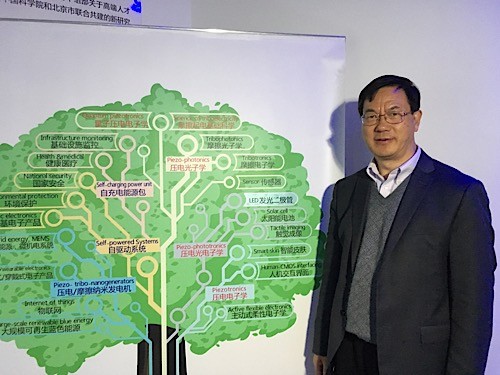
Zhong Lin Wang, director of the Beijing Institute of Nanoeergy and Nanosystems.
By Michael Banks in Beijing, China
I was told that it wouldn’t rain much in Beijing, a city known for its dry air – and pollution.
But since I arrived here last night courtesy of the bullet train, all I have seen is drizzle. The wet weather also made it a challenge during rush hour, but I finally made it to the Beijing Institute for Nanoenergy and Nanosystems (BINN).
I met with BINN’s director, Zhong Lin Wang, who has been in the US for more than 39 years, most of which has been spent at the Georgia Institute of Technology. While he is still affiliated to Georgia Tech, he came back to China in 2012 to establish BINN.
He is excited about what is happening in China, given the focus on science and the amount of funding that is available.
Cash and manpower – the institute has 300 people working there – is helping him to pursue a number of areas of interest that he developed when in the US.
This includes the new field of piezotronics – using the piezoelectric potential in a material (created by applying a stress) as a “gate voltage” to create new devices.
He also outlined the area of energy harvesting by using the “triboelectric” effect. This is when materials become electrically charged after they come into frictional contact with a different material. He coined these “triboelectric nanogenerators”.
He showed me a myriad of applications for such technology from putting the devices in your trainers, using them as pacemakers by placing a thin film on the heart, to placing them in the ocean so that the movement of water produces electricity.
Indeed, Wang is particularly interested in providing energy from the sea, adding that it is possible to generate 1 MW from a 1 km2 array of such nanogenerators.
He wants to test this technology in the ocean to prove that it can generate useful energy, something that Wang says could be possible to do in China but would be difficult to carry out elsewhere.
He dubs this his “blue energy dream”.
Look out for a full interview with Wang in the upcoming China special report to be published in July.
Trackback: Blog - physicsworld.com